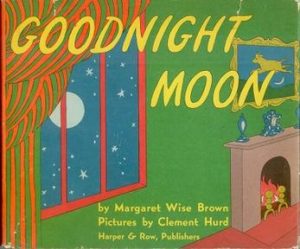The Circle of Thirteen
 How far do the ripples of violence go? The Circle of Thirteen begins with a mindless act of family violence in 2008 and spans seven decades, finally culminating in the desperate effort by Julia Moro, the U.N. Security Director, to stop a major act of terror. In this rich, textured thriller, Bill Petrocelli weaves the story around themes of poverty, political corruption, environmental disaster, and the backlash against the rising role of women.
How far do the ripples of violence go? The Circle of Thirteen begins with a mindless act of family violence in 2008 and spans seven decades, finally culminating in the desperate effort by Julia Moro, the U.N. Security Director, to stop a major act of terror. In this rich, textured thriller, Bill Petrocelli weaves the story around themes of poverty, political corruption, environmental disaster, and the backlash against the rising role of women. 
Weaving back and forth in time, this gripping narrative illuminates the unbreakable bond between strong women, providing an emotionally grounded window into the future’s unforgettable history. This is a thrilling ride that will mesmerize until the end.
Praise for The Circle of Thirteen
“The Circle of Thirteen is a true celebration of the power of women in the face of great odds.” — Lisa See, author of China Dolls and Snow Flower and the Secret Fan
“A remarkable tale . . . fascinating and provocative” — John Lescroart, author of The Fall and The 13th Juror
“A unique and thoughtful thriller” — Martin Cruz Smith, author Gorky Park and Tatiana
“A fantastic, futuristic view of the reality that we may already have created” — Katherine Neville, author of The Fire and The Eight
“A wonderful, uplifting thriller full of strong and unforgettable women” — Abraham Verghese, author of The Tennis Partner and Cutting for Stone
Buy a copy of the book
Video of Bill Petrocelli with Isabel Allende
When Isabel Allende volunteered to be in conversation with me for The Circle of Thirteen at Book Passage, I knew I was in for something special. I didn’t know how special until I heard one of the first sentences out of her mouth: “Who knew that Bill Petrocelli was a bigger feminist than Gloria Steinem!” Wow! (Did anyone ask Gloria Steinem how she feels about that?).
You can see it here:
Keeping Reality Out of the Way
The Circle of Thirteen is a work of future-fiction, and that presents some unique challenges.
The basic rules of character, tension, and pace are the same for any fictional thriller, but with  future-fiction you have the problem of creating a world that is familiar enough to seem real but unfamiliar enough to create the feeling that it has not yet happened. The reader needs to be in a not-quite-comfortable place. This was a chance for my imagination to run – if not wild, at least at a controlled trot into the future.
future-fiction you have the problem of creating a world that is familiar enough to seem real but unfamiliar enough to create the feeling that it has not yet happened. The reader needs to be in a not-quite-comfortable place. This was a chance for my imagination to run – if not wild, at least at a controlled trot into the future.
Chatting with Chatterific
Gerald So: The Circle of Thirteen sounds like a sweeping, cross-genre story. How did the concept come to you? If you would, describe its road from inspiration to publication.
Bill Petrocelli: I plead guilty as charged – The Circle of Thirteen is relentlessly cross-genre! It is rather sweeping in its scope, and it’s for that reason that I felt compelled to structure it as a thriller in order to maintain the pace and the tension. The broader the story got, the more determined I was to keep it under control and fit it into the thriller mode.
Excerpt: Julia’s Painful discovery of Her Mother
The setting for this excerpt is 2047 – a few decades from now. But it’s really set further off in the future than that. The narrator is Julia Moro, the protagonist of The Circle of Thirteen, and she is looking back to the when she was four years old. It’s her earliest recollection as a child.
What moved me, I suppose, is the near certainty that there is a scene with a book lodged somewhere in the earliest memories of a great many children. In the case of Julia, she and her mother are curled around a copy of Goodnight Moon, looking for the little mouse in every scene. Since Goodnight Moon was first published in 1947, the story would be 100 years old by the time it found its way into Julia’s lap in this novel.
However, what should have been a fond turns very painful.
How Bad Can the Bad Guy Be?
Many mystery fans will tell you that their favorite character in any crime novel is the bad guy. There’s often a good reason for that. It takes a lot of thought to become a good villain. By the time you’ve b een primed to be the heavy in the story, at least half of the responsibility for moving the story forward rests on your shoulders. . . . A real mystery bad guy is a person driven by an outrageous compulsion or someone sporting a moral callousness that will make you sit up and take notice.
een primed to be the heavy in the story, at least half of the responsibility for moving the story forward rests on your shoulders. . . . A real mystery bad guy is a person driven by an outrageous compulsion or someone sporting a moral callousness that will make you sit up and take notice.
Fact-Checking the Future
Writing teachers say write with a strong sense of place. Little details can bring a story to life, and the historical setting can often  place those details in the reader’s mind so that they don’t have to be spelled out. If the hero is “confronted by a man with a gun,” the context can fill in the picture. If the story is set in Tombstone 1881, Chicago 1927, or Berlin 1944, in your mind’s eye you’ll see a Western Sheriff, a Chicago mobster, or an agent of the Gestapo.
place those details in the reader’s mind so that they don’t have to be spelled out. If the hero is “confronted by a man with a gun,” the context can fill in the picture. If the story is set in Tombstone 1881, Chicago 1927, or Berlin 1944, in your mind’s eye you’ll see a Western Sheriff, a Chicago mobster, or an agent of the Gestapo.
But what do San Francisco in 2056 or New York in 2082 look like? Writers of future-fiction don’t have to do much historical research, but they do something just as difficult: they have to create a historical context on the blank slate of a reader’s mind. The challenge is to merge your vision of the future with the visions of thousands of readers without jarring them to the point of distraction.
Telling the Story Backwards
Give me a scene, and I felt I could nail it. I’d written a whole series of encounters between the characters in The Circle of Thirteen, and after a lot of editing I thought they read well. Was I varying my sentence lengths, as writing teacher s suggest? You bet. I had long sentences with dependent clauses, and they had sinuous phrases that wrapped around the visceral images. And there were short ones, too. Three-word sentences. Some two.
s suggest? You bet. I had long sentences with dependent clauses, and they had sinuous phrases that wrapped around the visceral images. And there were short ones, too. Three-word sentences. Some two.
The scenes, I felt, all moved along nicely. I didn’t show my hand too early, give away anything too soon. The key word was always at the end of the sentence. The sentence with the most punch was at the end of the paragraph. The last paragraph of each chapter left your hanging, wondering what would come next.
Still, it was wrong. And then I realized something.
Attention Film-Makers! The Circle of Thirteen Will Help You with the Bechdel Test
Are you having trouble with the Swedish Film Institute? Do you need to improve your Bechdel Rating by including more women in important roles in your movies? Look no further. The Circle of Thirteen provides the perfect story for your next movie script. The Bechdel system gives high marks to films with important women characters who talk to each other about things other than men during the course of the movie. Based on that criteria, The Circle of Thirteen will guarantee you an A+ on your next score card.
If interested, please contact this website. We accept all major currencies.
Characters Who Invite Themselves into the Story
A story may begin with an idea. It may even begin with a place, a memory, or a mood. But those things can easily fade and drift  away until the writer is not really sure what he or she had in mind in the first place. The story only becomes real when a character invites herself into the story.
away until the writer is not really sure what he or she had in mind in the first place. The story only becomes real when a character invites herself into the story.
I say “herself” when, of course, I could just as easily say “himself.” And, in fact, there is an important male character who invited himself into my novel The Circle of Thirteen at a very early point and has clung to the story like death. And that’s the problem. Wherever Jesse goes, bad things happen. He might have invited himself into the story, but he’s not someone you would ever invite out for a drink or welcome into your home for tea.
I feel much better about Julia and Maya – the two main female characters in the book. When the book was finished, I was happy that there were two important women characters that I still genuinely liked.
